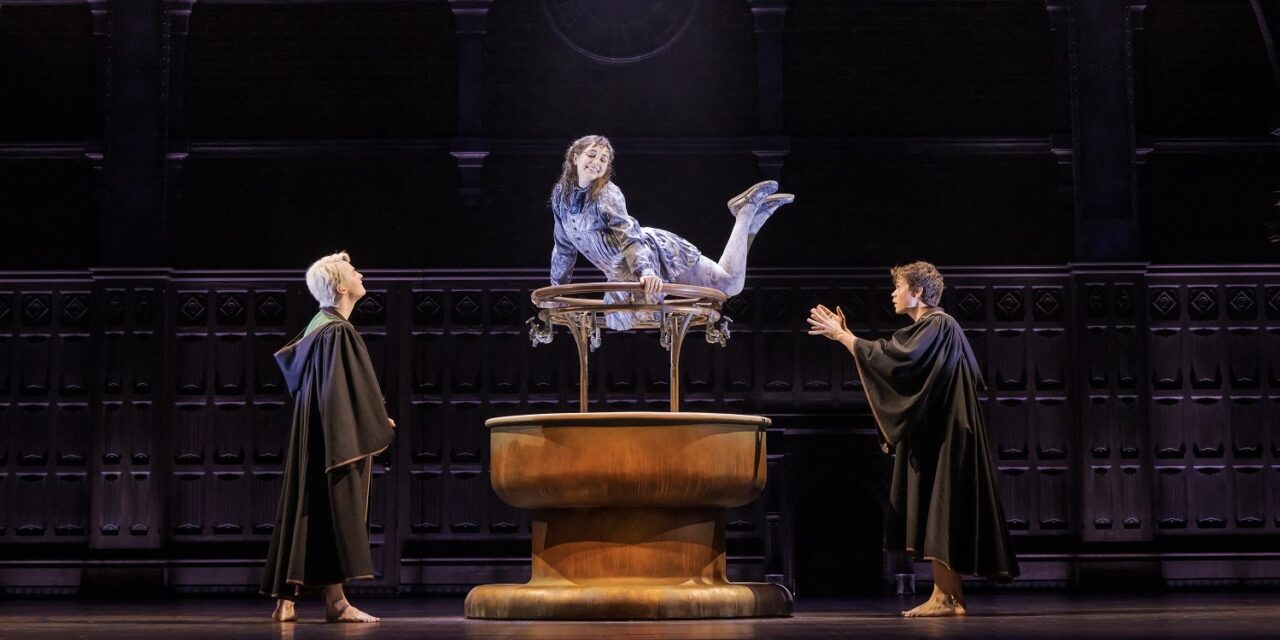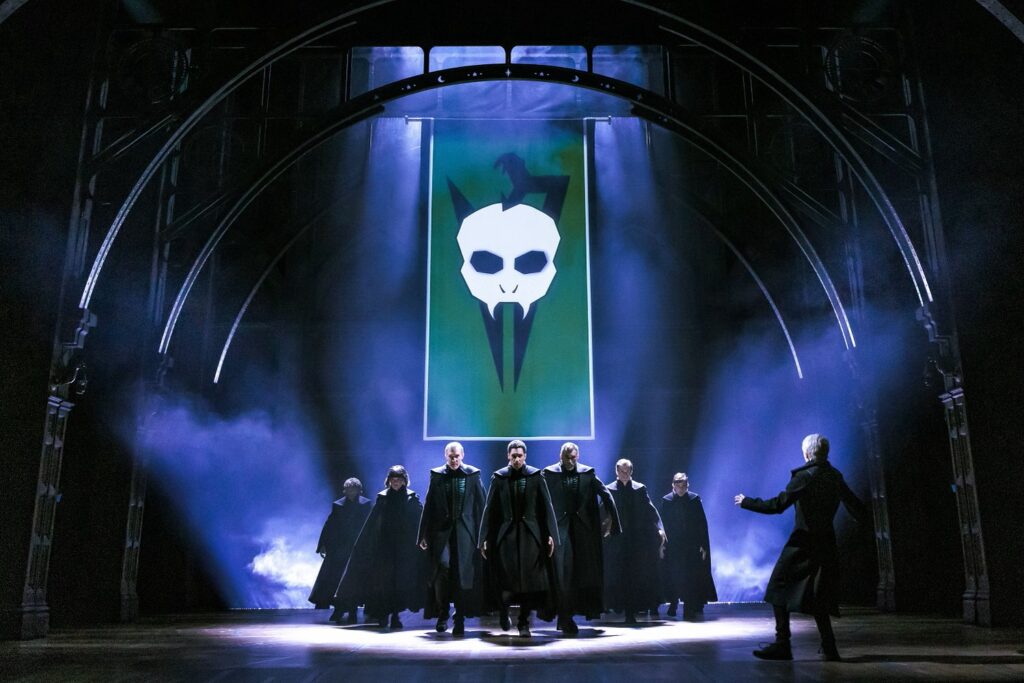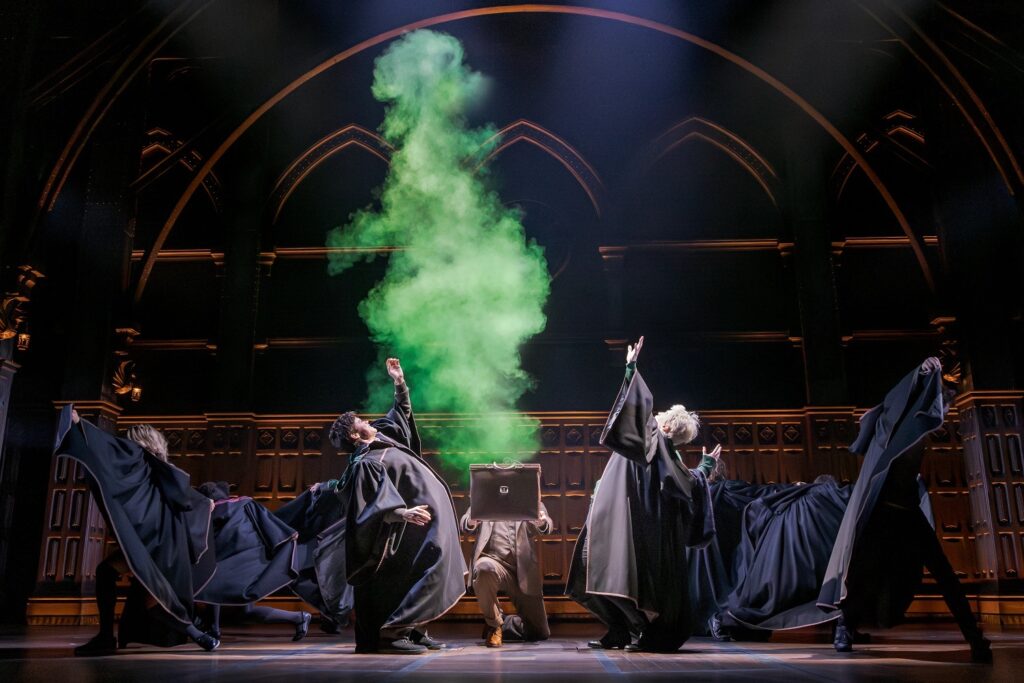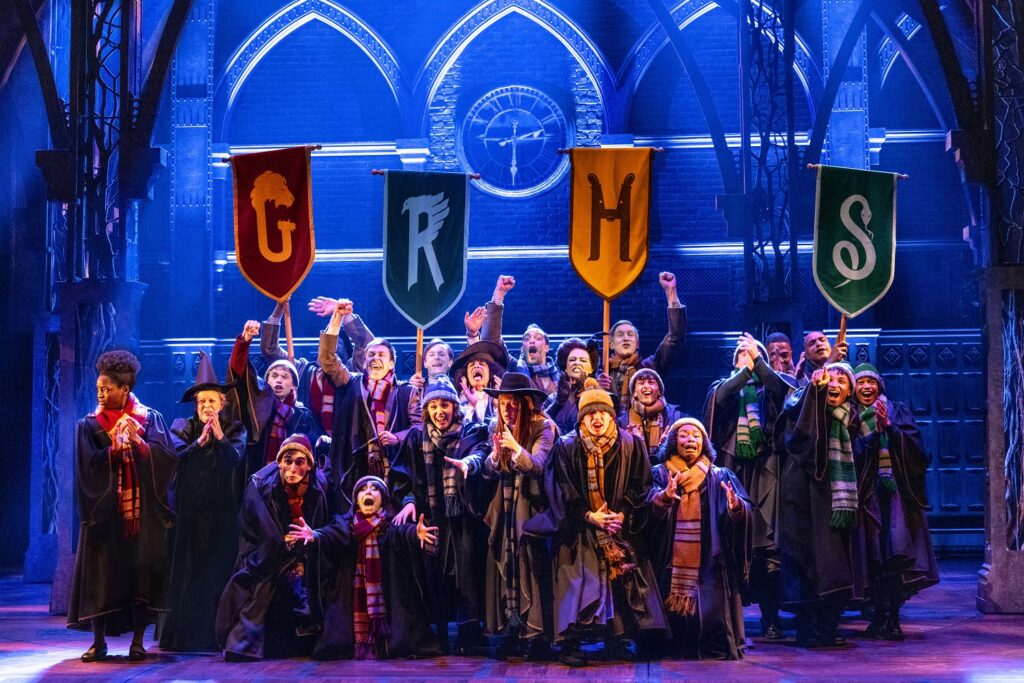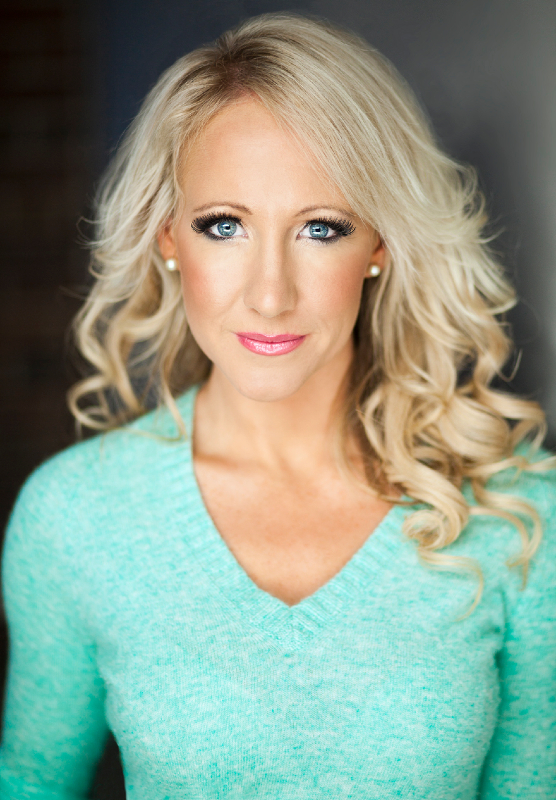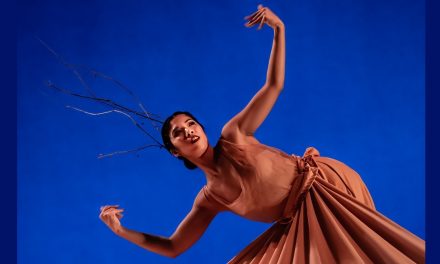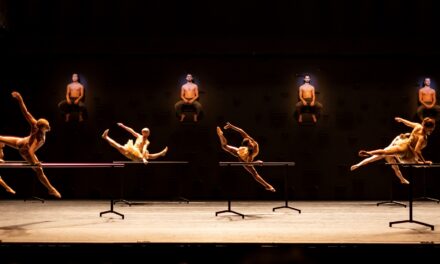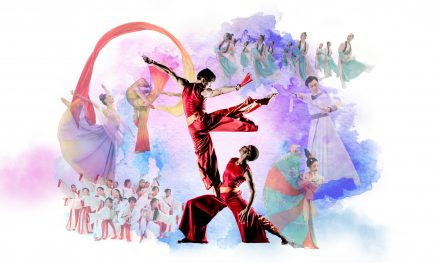I caught up with Jennifer Thiessen last Friday who generously gave of her time to have a chat with me about “Harry Potter and the Cursed Child” which just finished playing at the Pantages Theatre in Hollywood. She is the “Movement Captain” of the show and we spoke about all that entails in a show where there is choreography, magic, illusions, and set changes on a rotating stage. It keeps her incredibly busy and incredibly fulfilled to be so central to a show with so many different moving parts. I originally had a straightforward question and answer scenario set up a’la Dick Cavett, but it quickly devolved into a geek fest over the different aspects of her job in this massive touring show. She has a very particular skill set which suits this show beautifully. I allotted 30 minutes for our interview and when we had finished it came in at 1:02 minutes. Here is the abridged version.
Brian Fretté – Hello! How are you? And thank you for meeting with me today.
Jennifer Thiessen – I’m excellent Brian, nice to meet you.
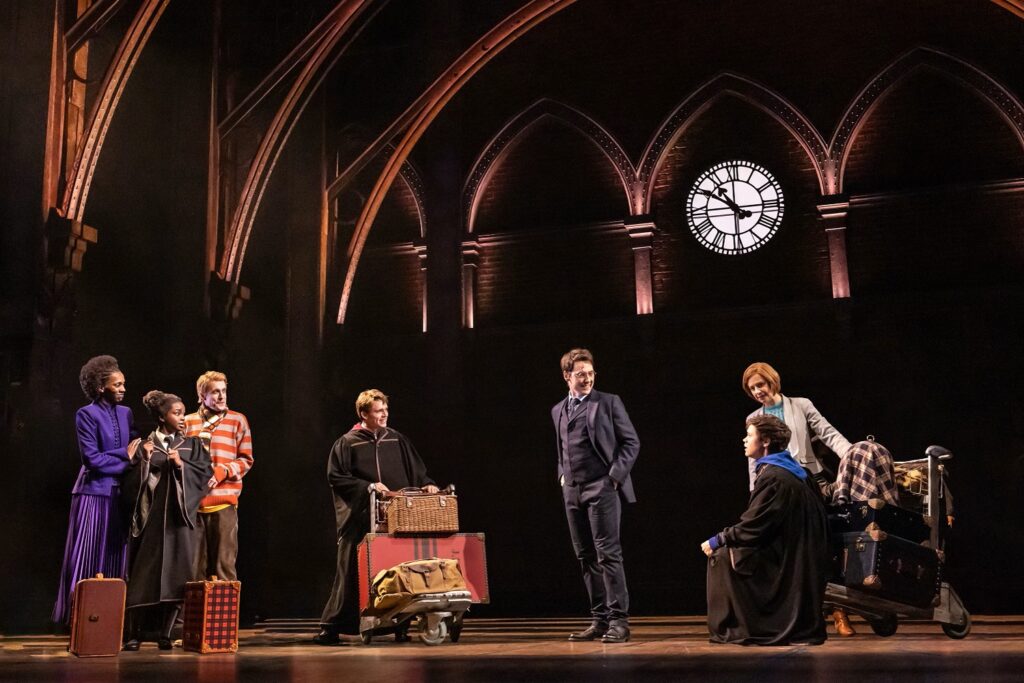
Harry Potter and the Cursed Child North American Tour – (l-r) Ebony Blake as Hermione Granger, Naiya Vanessa McCalla as Rose Granger-Weasley, Matt Mueller as Ron Weasley, Caleb Hafen as James Potter Jr., John Skelley as Harry Potter, Trish Lindstrom as Ginny Potter, Emmet Smith as Albus Potter – Photo by Matthew Murphy.
B.F. First of all, I loved the show. The show is crazy and wild.
J.T. It’s crazy, isn’t it?
B.F. What is your job as Movement Captain and what are you specifically responsible for?
J.T. I wear many hats in this show. So, similar to a Broadway dance captain I look after if there is a movement number or a movement sequence, I keep them clean and keep the integrity of John Tiffany and Steven Hoggett’s work. This show is extra special in that every cape swoosh is all choreographed within an inch of its life.
B.F. Yes, exactly, I can see that! I call it cloak-ography.
J.F. It’s amazing right? There is cloak-ography, we have a magic resident and a magic associate as well who looks after the magic. And then there is a lot of movement sequences that are integrated into the magic which I can’t tell you about!
B.F. No, but they are integrated! I saw that – the whole fight between Harry and Draco looks like Kabuki with aspects of Chúnori and Kuroko evident, but don’t tell me, keep it a secret! It looked Japanese, I loved that theatrical magic.
J.T. And it is Old School theater magic too, which is so brilliant. There is so many new and innovative ways of doing theater and theater magic, however they are really using old theater tricks, which is so nice.
B.F. Exactly, that is what blew me away, that is O.G., it is fantastic. But that must make your job twice as hard.
J.T. Yes, so absolutely, I look after all the fights as well. It would be similar to a fight director except in this case it is movement, it is choreography, and it is designed to be that way.
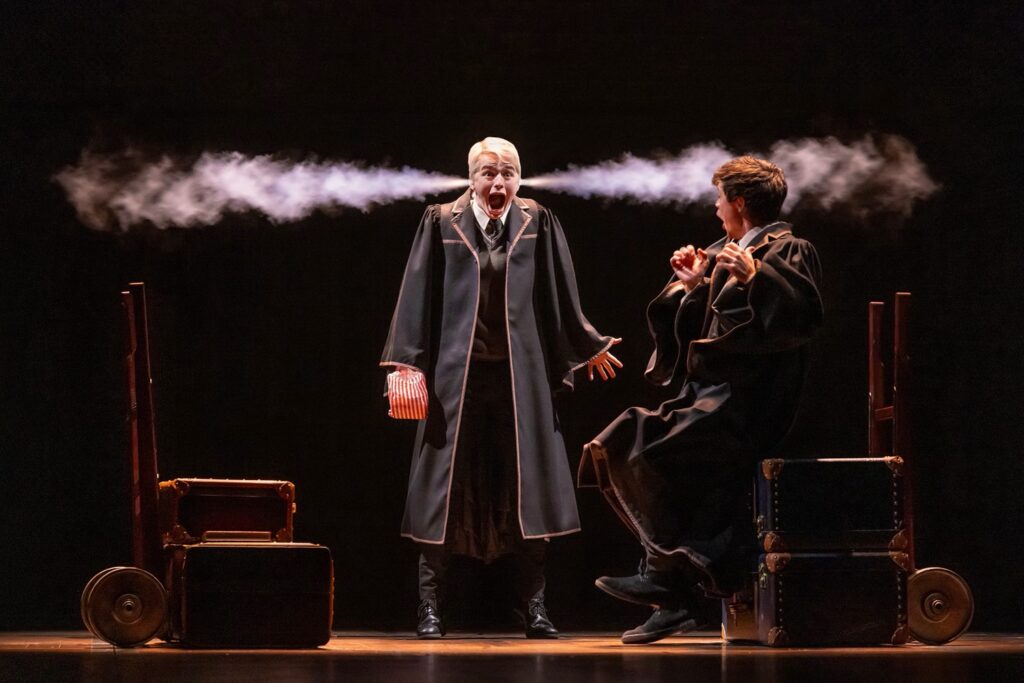
Harry Potter and the Cursed Child North American Tou- (l-r) Aidan Close as Scorpius Malfoy and Emmet Smith as Albus Potter – Photo by Matthew Murphy.
B.F. Your background is dance, I just saw a short blurb of a bio, can you go into more detail about that?
J.T I have a dance background. I trained in Australia, specifically for Musical Theater, I also have an acrobatic and circus background. Especially when I was over in Canada and I lived there for a long time I worked really closely with all of these amazing circus troupes, so as you can see there are a lot of Circus Arts also integrated into the show. So my skill set really lends itself nicely to that. Also, as an acrobat and dancer I was a magicians’ assistant for years. I had filmed “Masters of Illusion” here in Los Angeles with Greg Frewin.
B.F. You are perfect for this job, they are lucky they found you.
J.T. When they did find me my skill set lent itself perfectly to what they were looking for.
B.F. Did you work with Steven Hoggett (Movement Director) for the show?
J.T. Yes, first of all Steven Hoggett is beyond brilliant. The way that he takes “Dance” and transcends it, you don’t even know that you are watching choreography. It’s the brilliant thing of the show. And when you ask, wow, your job must be so big, it really is. Those transitions are so seamless in my opinion they are the best in the world.
B.F. They are. The transitions are all choreographed to a ridiculous degree.
J.T. Within an inch of their life. And Steven Hoggett has taken something that is pedestrian and turned it into something that is magical. That is spectacular. I had done the show previously in Toronto and we worked closely with John Tiffany there. I had been looking after Steven Hoggett’s choreography for years by the time I met him in New York. And then met him again in Chicago. Listening to the language and the way that both John Tiffany and Steven Hoggett interact with the actors is so brilliant. The way that they speak about movement is so pedestrian. This show is filled with brilliant Shakespearean actors. How do you make Shakespearean actors move seamlessly and create an entire world just like you would in a dance show? And how do you do that with people who have such a different skill set? The language that they use to allow actors to creatively understand how to move in a way that creates the entire magical world (of Harry Potter). And this magical world means so much to people! People grew up reading those books and they have really strong opinions about it. The world has to honor that. It has to speak to everyone and then that means that the actors themselves have to take ownership of what they are doing for it all to come together to create this brilliant world. There is this movement called the “staircase ballet.”
B.F. Right, that is fantastic. There are many musical interludes with movement, there is the staircase ballet, and the wand dance, and there is the top of the second act in the Evil future that is an entire dance. What is interesting is calling these movement sequences vs. choreography vs. musical staging. To me, watching the show, they just blend into the story of the show. How do you address these different numbers for rehearsal?
J.T. I work so closely with our brilliant resident who looks after the direction, her name is Collette Roberts. We work so closely that we are often saying, “Who’s department is this?” And the same with our magic associate Michael Crass who will fly in and the three of us will be there together and we play that game of “Who’s department is this?.” And the truth is, it is all of our department. Because that comes down to Steven Hoggett and John Tiffany being friends for 37 years so the way that they interact with each other is fun and seamless. The way that the team has to interact with each other, it has to be fun and seamless. None of us can go in with an ego. We all learn about this brilliant show every day. The transitions are seamless because their relationship is seamless. Hopefully that integrity is kept within the show because the relationship between all the residents and myself are also seamless to make the actors feel empowered to put themselves in danger every day!
B.F. What I see is the idea of pedestrian movement becoming choreography because you put music to it and you make it more exact, any actor in the world can do it you just have to give them permission and break it down in pedestrian terms. Sometimes in my work when I call something a “dance step” there is a difference in comprehension than if I just say you walk over here on the beat in the music. It makes the movement pedestrian rather than a technically skilled dance step. The philosophy behind pedestrian movement becoming exaggerated or pronounced until it reads as choreography which is a very smart way to convey specific or unison movement.
J.T. Totally, he (Steven Hoggett) will not really refer to any of the numbers (in the show) as a dance piece. Always movement based, it’s always story driven. and that is what makes it so spectacular, and because it is story driven the actors can then latch onto it and understand it, and then when you give people permission, the way an actor might move to that would be different than say, a trained dancer.
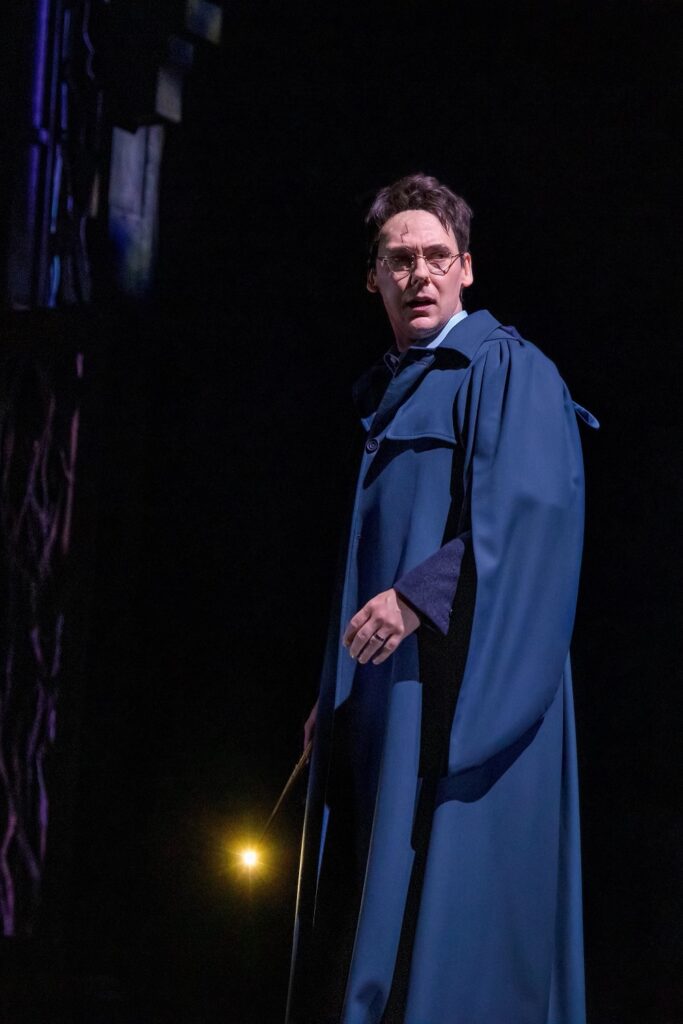
Harry Potter and the Cursed Child North American Tour – John Skelley as Harry Potter – Photo by Matthew Murphy
B.F. Exactly, but that’s what makes it work. A trained dancer might be too refined or too elegant for the particular story and you want to see a person dealing with the events.
J.T. That’s it. It’s all story based first, it all comes from the story. In choreography, we always talk about interesting or more interesting, well it’s the most interesting because it comes from nothing. The way that the suitcases come alive and how to effectively pull a suitcase so that the audience believes that the suitcase is pulling you.
B.F. It is the same with the wands in the wand dance.
J.T. Exactly, there is an entire language we use around ‘V-world’ at the top of the second act. There is a specific language we use with the actors to make sure that it stays grounded, it stays heavy, and it stays oppressed. The walks across stage is such a specific style of walking. We spend hours on that. I do a daily warm-up with the actors on that. The V-wedge coming downstage is so brilliant because of the lighting by Neil Austin.
B.F. Yes, the lighting blew me away and allowed so much of the magic to happen.
J.T. It’s a masterclass in lighting. That lighting wedge in ‘V-world’ – sometimes when you are doing choreography, you are doing so much! It is always simplicity is best, and you have one actor turning into two actors and so on. It is something from nothing. And all they are doing is walking downstage for four counts of 8! It is entirely story driven and intimidating and dependent on the lighting.
B.F. Simple is best, especially when you are touring to different theaters and maybe different countries.
J.T. It takes a supreme amount of trust. Because John Tiffany and Steven Hoggett have a great amount of love and trust in each other, it allows everything to happen in a safe creative environment and that fosters brilliance.
B.F. This is a big show and I was impressed by the level of subtlety throughout. You don’t often see such subtlety and simplicity in a large show like this.
J.T. We are wizards in the show so the impetus as actors is to make everything big. My job as the movement captain is to always bring it back and tighten it up, making it more realistic. Steven always says the subtlety is what makes things work. The audience can then zero in on what is being told.
B.F. I went in expecting a huge extravaganza and this show is so much more detailed and specific than that.
J.T. The show has its own vocabulary and its own time. We have 35 company members and 22 swings and understudies. We opened the show in September, and six to seven months later we are still in rehearsal so anyone can go in at a moments’ notice. We speak about gestures a lot. What is contemporary and what fits into the show. That is why my job is so hard to describe! It is so vast.
B.F. Yes, it’s not just cleaning and keeping the movement intact. It is so much more than that.
J.T. It is a joy and a pleasure because the actors are so hungry and eager.
B.F. How do you audition actors?
J.T. The process is very in depth. The auditions are rigorous and days long. There is a hardcore movement sequence taught, there is strength work and stamina work. There are qualities of teamwork woven in to facilitate ensemble work. We do a great deal to foster this headspace in the company. The company meets an hour and a half early to do a group warm-up which I lead. It has its own specific vocabulary. We do a vocal warm-up together. There is no singing but a great deal of text and speaking involved. The company often has to move as one group. For example, in the ‘staircase ballet’ in order to move the stairs as one amoeba we encourage breath work. It is company work as an ensemble, and necessary to ensure safety. The stairs are an actor in themselves and are treated as such.
B.F. Humor is an important part of this show even though there are dark elements.
J.T. John Tiffany approaches everything with love. He will give a note session and make a joke and everyone is howling. They have love and respect. Humor is the key. Our show deals with heavy and dark material. There is murder, there is oppression, there is death. When we have actors come in with lightness and humor the audience can breathe. It is a punctuation that delivers the human side of the characters.
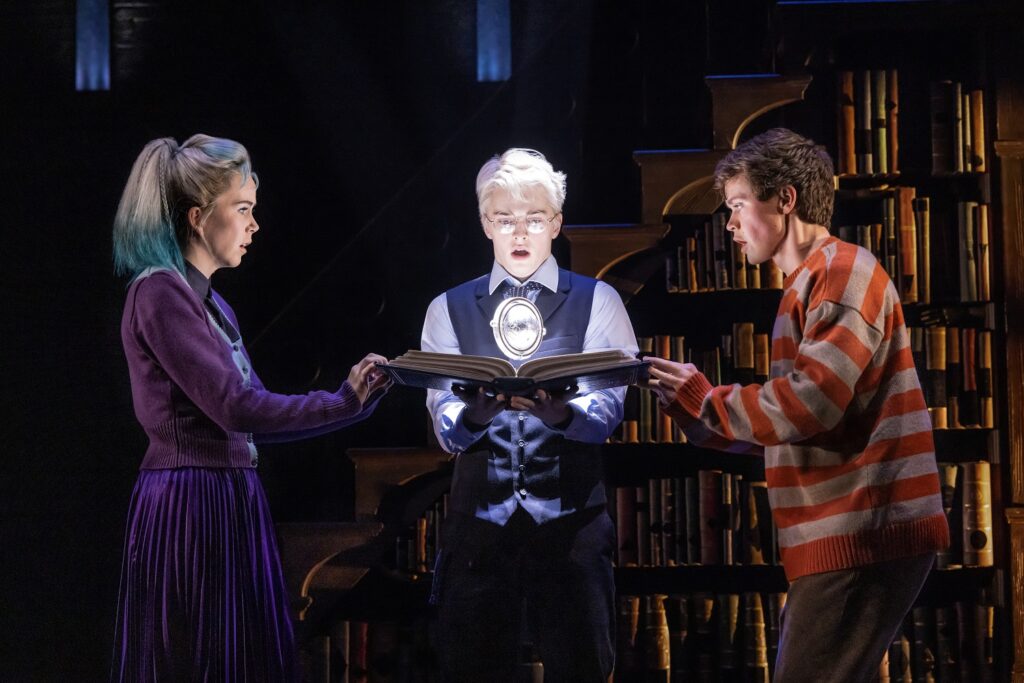
Harry Potter and the Cursed Child North American Tour Julia Nightingale as Delphi Diggory, Aidan Close as Scorpius Malfoy and Emmet Smith as Albus Potter – Photo by Matthew Murphy.
B.F. To me the overarching theme of the show is love. You even see it in Voldemort’s daughter. She wants to save her father. This theme is woven throughout every character in the show.
J.T. Jack Thorne is amazing, and he and John Tiffany are very close. They work beautifully together. They really came up with a new version for this run of the show. There are a few iterations of the show. It went from a two-day six-hour version still being performed in London to a three-and-a-half-hour version in Toronto and Broadway to this three-hour version in LA. And they like the three-hour version so much they trimmed down the other touring shows to that time frame. They then changed the Broadway show to the three-hour version. They give the actors ownership of the work so that they feel they are a part of the new version. Sometimes there is a new move that an actor brings to the work, and it is so exciting when Steven sees it and incorporates it.
B.F. The cloak work is amazing and lends itself to the illusions and magic. Sometimes cloak work can come off as camp, but this never does. It is varied and always serious and effective for whatever purpose it is being used, especially under the lights. I was reminded of Flamenco when seeing it.
J.T. There is so much cloak work that we do that we have names for the different swooshes. We have the across-the-body swoosh, the high-swoosh, the 360-swoosh. It’s a technique. There is a specific way the cloak has to catch air and then sometimes not. We warm up our arms to practice throwing the cloak a certain way and get our swooshes in unison. Our cast ranges in age from people in their 70’s to people in their 20’s. And they all do the same warm-up to maintain strength and safety, to move as a company, to warm up the shoulders and maintain the swoosh. We do the warm-up together to keep everyone safe and focused on the show. The requirements for this show are so vast physically. If you are half an inch off you are out of your light, or in danger.
B.F. I love the brutality of that kind of spacing with the lights and props and costumes and tricks and illusions. It is so specific and absolute.
J.T. That kind of focus is important especially on the 8th show of the week, when the audience deserves the most spectacular show, There is no phoning it in as we work as a company and all are dependent on each other. I always say, ‘not today,’ everyone is responsible for the safety of the others.
B.F. How are the audiences here?
J.T. The L.A. audiences and are so interactive and so invested in the show. The sense of play and back and forth are unbelievable. They are on the edge of their seat, and they are so communicative. They are so excited for the magic and want to let us know. The age ranges are great with full-blown adults dressed in Hogwarts gear. They all show up with their wands and the cast loves it.
B.F. Do you have a favorite scene or bit from the show?
J.T. It’s so interesting, ‘The Ministry of Magic dance’ is all constructed in triangles, the people who are the busy bees moving really fast and then the next level are the giants and they are less busy, then in a diamond shape the Hogwarts legends come down stage, and then the Minister of Magic walks up a triangle shape to the top ending in a pyramid. The number uses the shapes to define the positions of the different people in the ministry in terms of status and importance. I love the meaning behind their movement and their positions. I make sure they are in their lines and hit their marks.
J.T. It was great meeting you and good luck with the show. Thank you so much! Thank the cast for me as they were present here in our talk.
J.T. Thanks Brian and yes I will, it was fun talking with you.
Go see her work and the work of the entire cast in “Harry Potter and the Cursed Child.” You will not be disappointed.
Written by Brian Fretté for LA Dance Chronicle.
Featured image: Harry Potter and the Cursed Child North American Tour Aidan Close as Scorpius Malfoy, Mackenzie Lesser-Roy as Moaning Myrtle, and Emmet Smith as Albus Potter – Photo by Matthew Murphy.

